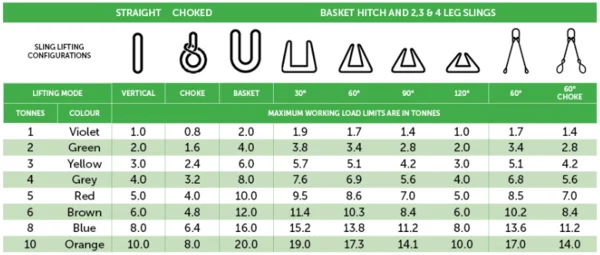Safety is paramount in lifting and rigging operations, especially when utilising synthetic slings. These versatile tools offer immense advantages but require strict adherence for optimal performance and risk mitigation. Here, we share our Synthetic Sling KnowHow to provide you with crucial safety guidelines and best practices to ensure synthetic slings' safe and effective use.
 Proper Inspection and Maintainance
Proper Inspection and Maintainance
Regularly examine synthetic slings for wear and tear, retiring damages ones promptly to ensure reliability in operations. Store slings in optimal conditions, safeguarding them from environmental elements to maintain their integrity.
- Regular Inspections: Before each use, thoroughly inspect synthetic slings for cuts, abrasions, fraying or other signs of wear and tear. Abide by the manufacturer's guidelines for inspection frequency.
- Retire Damaged Slings: Any slings showing signs of damage should be immediately taken out of service and replaced to prevent potential failures during lifting operations.
- Storage: Store synthetic slings in a cool, dry place away from direct sunlight and chemicals to prevent degradation.
 Secure Attachments and Usage
Secure Attachments and Usage
Verify secure attachments and ensure even distribution of the load. It is essential to minimise shock loading to prolong the sling lifespan.
- Secure Attachments: Ensure proper attachment to lifting points and verify the load is evenly distributed across the sling to prevent slippage.
- Avoid Shock Loading: Minimise sudden jerks or shock loading, as it can significantly reduce the lifespan of the sling and increase the risk of failure.
- Controlled Lowering: Avoid sudden drops or uncontrolled descent during lowering operations to prevent excessive strain on the sling.
 Correct Sling Selection
Correct Sling Selection
Select slings based on load specifications and environmental suitability, consulting manufacturer guidelines for accurate choices. Consider the operational environment to ensure the chosen sling material aligns with the conditions for optimal performance.
- Load Capacity: Ensure the chosen synthetic sling has the appropriate load-bearing capacity for the intended lift. Refer to manufacturer specifications and charts to select the correct sling.
- Environmental Suitability: Consider the environment where the sling will be used. Different materials may be more suitable for specific conditions such as moisture, chemicals or UV exposure.
 Maximum Working Load Limit (WLL) in Tonnes
Maximum Working Load Limit (WLL) in Tonnes

 Training and User Awareness
Training and User Awareness
Providing employees with adequate training increases creates a knowledgeable and safety-conscious workplace culture.
- Training: Ensure all rigging and lifting operations personnel are appropriately trained in using synthetic slings. Training should include proper handling, inspection and rigging techniques.
- Safety Awareness: Encourage a safety-conscious culture where workers are vigilant about identifying and reporting any signs of damage or potential hazards.
 Proper Rigging Practices
Proper Rigging Practices
Steer clear of sharp angles and knots, utilising protective measures to prevent sling damage and maintain operational safety and strength.
- Proper Angles and Configurations: Avoid sharp edges and abrasive surfaces when rigging. Use padding or protective sleeves to protect the sling from damage.
- Avoid Twisting: Ensure synthetic slings are not twisted or knotted during use, which can significantly reduce their strength and integrity.
Implementing these safety guidelines and best practices is crucial to maintaining the integrity of synthetic slings and ensuring the safety of personnel and assets during lifting and rigging operations. Prioritise regular inspections, proper usage, and continuous training to uphold the highest safety standards. By following these guidelines, you can maximise the efficiency and reliability of synthetic slings while minimising risks and potential accidents.
Synthetic vs. Wire Rope Slings
How to make an informed sling decision for your next lifting operation.
Synthetic Slings Maintenance
A KnowHow to ensure the safety and longevity of your equipment.



